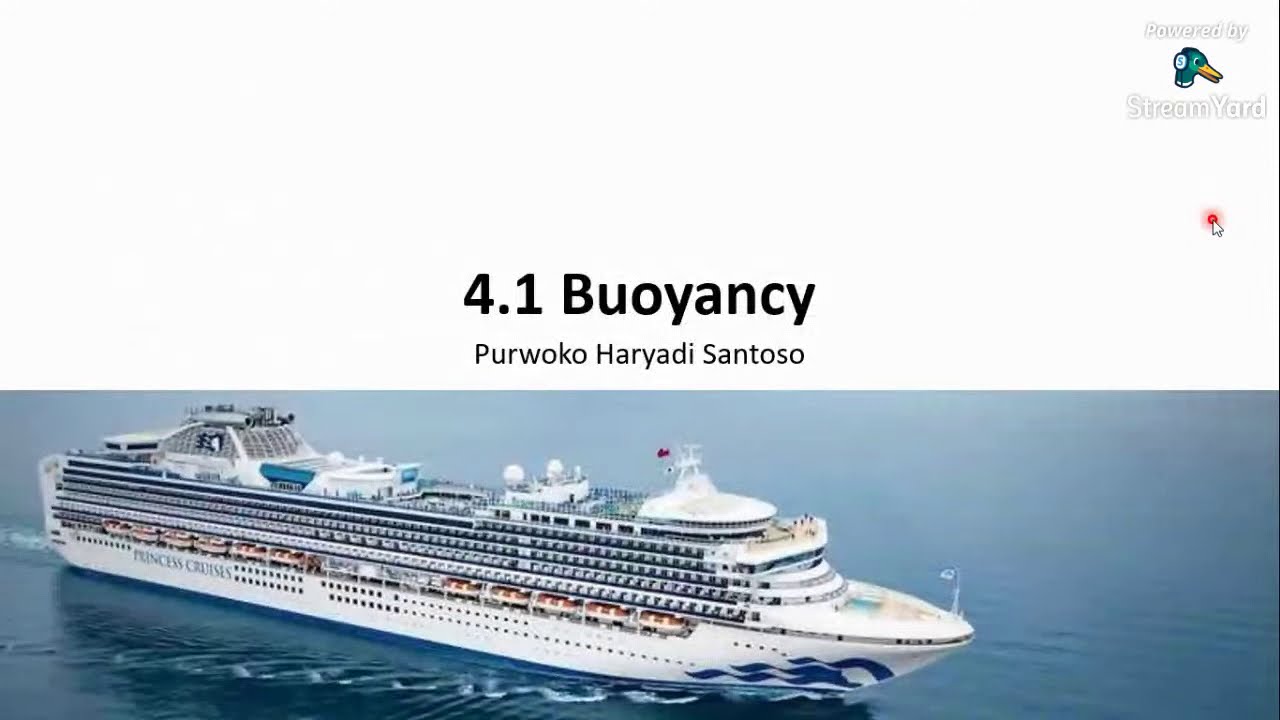Why do big ships float? [Buoyancy and flotation explained]
Summary
TLDRThis video explains the principles of buoyancy and floating as outlined by Archimedes. It illustrates how massive ships float despite their weight by displacing enough water to create an upward force. Using a brick as an example, the video clarifies how buoyancy works and discusses the significance of the Plimsoll line, which marks the maximum safe waterline for ships. Ultimately, it emphasizes that larger ships can float by displacing more water, thereby generating the necessary buoyant force to support their weight.
Takeaways
- 😀 Archimedes' principle explains why objects float based on the fluid they displace.
- 😀 Any object, whether fully or partially submerged, experiences an upward buoyant force equal to the weight of the fluid displaced.
- 😀 A brick submerged in water exemplifies buoyancy; it sinks if the upward force is less than its weight.
- 😀 To make an object float, you can either reduce its weight or increase the amount of water it displaces.
- 😀 A ship's design allows it to displace a significant volume of water, ensuring it floats despite its heavy weight.
- 😀 For instance, a large ship can displace 180,000 tons of water, balancing its own weight with that of the displaced fluid.
- 😀 The Plimsoll line on a ship's hull indicates the maximum safe waterline, showing how low it can sit while carrying cargo.
- 😀 Adding weight to a ship requires it to displace more water to maintain buoyancy.
- 😀 Larger ships float effectively because they displace more water, generating greater buoyant forces.
- 😀 Understanding these principles clarifies the counterintuitive nature of why massive ships can float.
Q & A
What principle did Archimedes discover that explains why ships float?
-Archimedes discovered that any body wholly or partially immersed in a fluid experiences an upward force equal to the weight of the fluid displaced, known as Archimedes' principle.
How does Archimedes' principle apply to objects that sink?
-Even objects that sink, like a brick, experience an upward force equal to the weight of the fluid displaced. If this upward force is less than the weight of the object, it will sink.
What is the formula to find the weight of the fluid displaced?
-The weight of the fluid displaced can be found by multiplying the density of the fluid by the volume of the fluid displaced.
Why does a brick sink when submerged in water?
-A brick sinks because its weight exceeds the upward force generated by the water it displaces, meaning the buoyant force is not enough to keep it afloat.
What must an object do to float according to the principle of flotation?
-To float, an object must displace a volume of fluid equal to its own weight. This can be achieved by either reducing the weight of the object or increasing the amount of water displaced.
How do ships manage to carry heavy cargo while remaining afloat?
-Ships remain afloat by displacing enough water to counterbalance their total weight, which includes the weight of the ship itself and its cargo.
What happens when a ship exceeds its cargo capacity?
-When a ship exceeds its cargo capacity, it sits lower in the water until non-water tight areas are submerged, causing water to flow into the hull and potentially leading to sinking.
What is the Plimsoll line, and why is it important?
-The Plimsoll line is a marking on the side of a ship indicating how low it can safely sit in the water. It shows the maximum amount of water the ship can displace while carrying cargo safely.
How do larger ships float despite their size?
-Larger ships float by having bigger hulls that displace more water, generating a larger buoyant force that supports their greater weight.
Why might the floating capacity of a ship seem counterintuitive at first?
-It may seem counterintuitive that massive ships float because people often associate weight with sinking; however, buoyancy allows them to stay afloat by displacing sufficient water.
Outlines

Cette section est réservée aux utilisateurs payants. Améliorez votre compte pour accéder à cette section.
Améliorer maintenantMindmap

Cette section est réservée aux utilisateurs payants. Améliorez votre compte pour accéder à cette section.
Améliorer maintenantKeywords

Cette section est réservée aux utilisateurs payants. Améliorez votre compte pour accéder à cette section.
Améliorer maintenantHighlights

Cette section est réservée aux utilisateurs payants. Améliorez votre compte pour accéder à cette section.
Améliorer maintenantTranscripts

Cette section est réservée aux utilisateurs payants. Améliorez votre compte pour accéder à cette section.
Améliorer maintenantVoir Plus de Vidéos Connexes

Mekanika Fluida #9 - Buoyancy

MICROTEACHING FISIKA SMA KELAS XI - HUKUM ARCHIMEDES

Hukum Pascal dan Archimedes | IPA | SayaBisa

Understanding Pascal's Law and Archimedes' Principle - Physics

TEKANAN ZAT CAIR (Tekanan Hidrostatis, Hukum Archimedes, Hukum Pascal)

What is the Archimedes’ Principle? | Gravitation | Physics | Infinity Learn
5.0 / 5 (0 votes)
